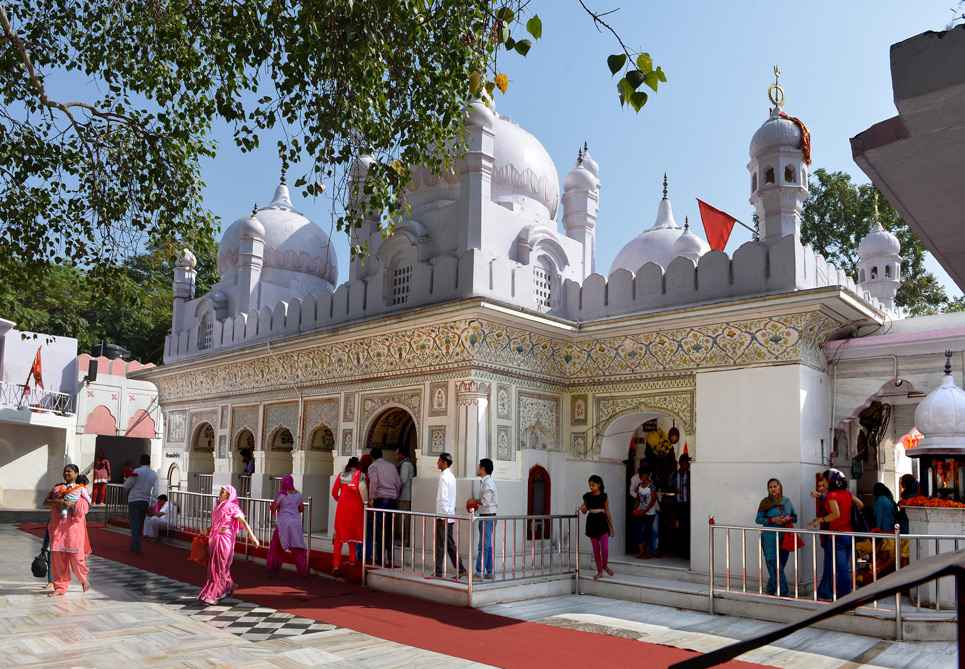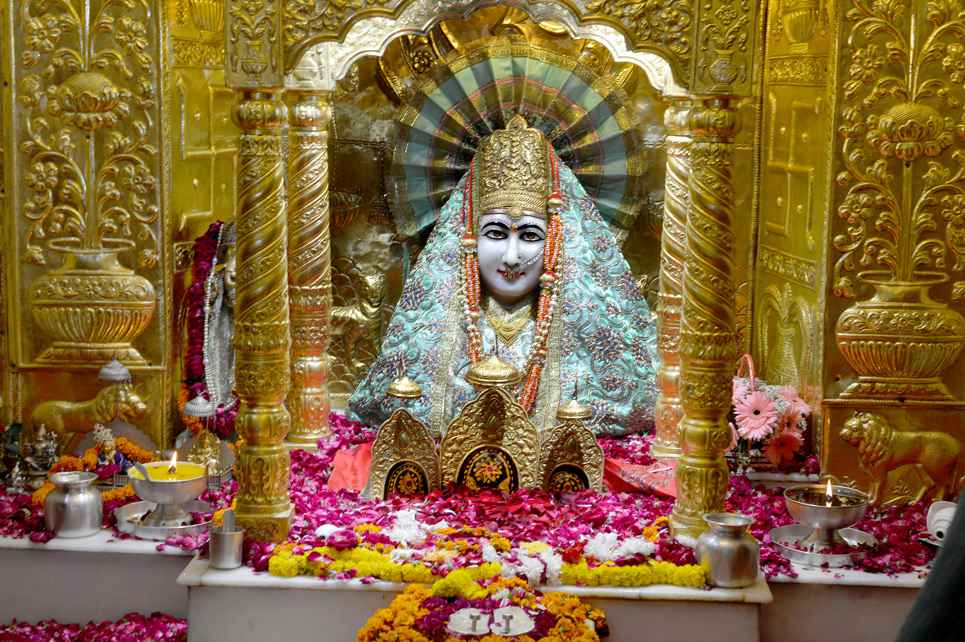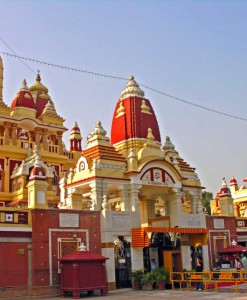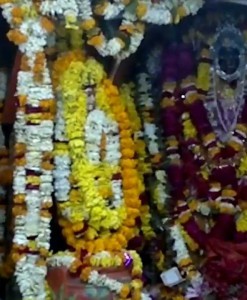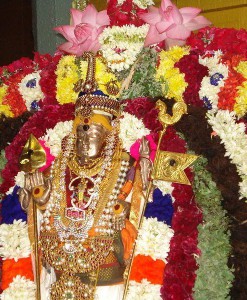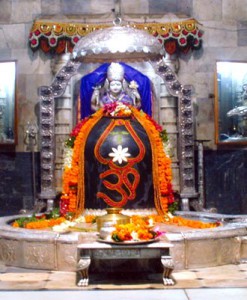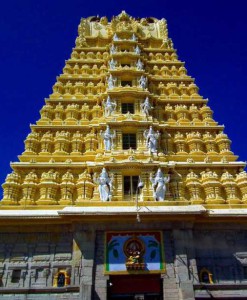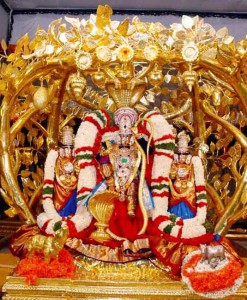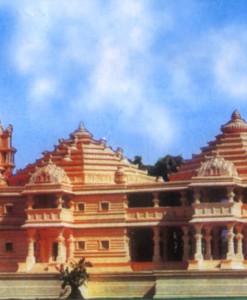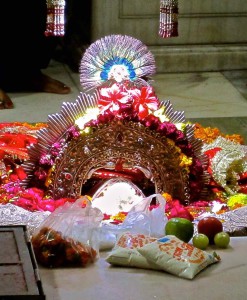No products in the cart.
Mata Mansa Devi is one of the prominent Shakti temples of North India, situated in the Panchkula district of Haryana state in India. This holy Siddh Peeth is dedicated to Mata Mansa Devi. According to the Hindu mythology, the head of Devi Sati had fallen over here.
Mata Mansa Devi Temple at Panchkula is a symbol of Himalayan culture and faith. The shrine located on the foot hills of Shivalik is an epitome of age old tradition of ‘Shakti’ worship in northern India. Himalaya being the abode of Shiva and his consort ’shakti’ became centre of Shakti worship. In the vicinity of Panchkula there are numerous Shakti worshipping centers known by their names such as Chandi, Kalika, Mansa, Bhima etc. Hence, mythological speaking, Chandigarh-Panchkula region undoubtedly continued to be living legends of shaktism where its practices are in vogue.
Mata Mansa Devi is a Shakti roop or form. It is strongly believed that Goddess Mansa, to whom this temple is dedicated, is a powerful Goddess who fulfills the wishes of devotees.
Mata Mansa Devi Temple, Chandigarh
Maharaja Gopal Singh of Manimajra constructed the present main temple of Shri Mansa Devi during the period 1811-1815. This temple had the patronage of Manimajra State.
Unfortunately, the temples remained neglected after the princely states were merged resulting in the ending of the State Government’s patronage. This is when a pujari was appointed as the ‘khidmatuzar’ of the temple to offer prayers to the deity of the temple.
Today, the temple has a marble idol of Goddess Mansa but earlier the whole ‘sand’ formed the ‘Pindi’ that encompasses Goddess Saraswati and Goddess Laxmi as well. It was this Holy ‘sand’ that was worshipped. The sparking ornaments that adorn the Goddess idol renders it even more charming and adds more spiritual appeal to it. These ornaments are especially used during festivals and pujas.
Architecturally, the temple has been built in Panchayatana pattern with four projections or transected parts on its four sides bearing semi pyramidal conical spires on the tops. These are called ‘shikkars’ or cronical shapes on the main domes. The main shrine (fifth shrine) being located the centre.
The main temple is dedicated to Mansa who is worshipped in the sanctum sanctorum both in the form of ‘pindi’ as well as in her anthropomorphic form executed on a marble. In the sanctorum the devi is worshipped with Devi Saraswati and Lakshmi in the form of Pindi (Stone pebbles). Originally the pindis were only worshipped by the devotees. However, in modern times a marble bust of the deity was got sculpted for giving an attractive human look (form) to the deity.
A garden that is beautifully adorned with sacred plants adjoins the Mansa Devi mandir. Devotees from all over the world visit this temple to pay homage to the Goddess. Navratri time sees a lot of fairs that are organized in the areas surrounding the Mansa Devi Temple.
The temple complex and its environment are presently looked after by Shri Mata Mansa Devi Shrine Board (SMMDSB) Panchkula which is a trust. In view of the popularity of the temple for its mythological and historical significance and also for fulfilling the wishes of the lakhs of devotees thronging to the complex, the Government of Haryana by an enactment (Haryana Act No. 14 of 1991) christened as Shri Mata Mansa Devi Shrine Act 1991 took over the control of this temple to provide for better infrastructure development, management, administration and governance of Shri Mata Mansa Devi Shrine and its endowments including lands and buildings attached to the Shrine. A Shrine Board with Chief Minister of Haryana as Chairman was constituted for running of the Temple and preserving the heritage of the region.
Millions of devotees visit this temple twice a year during the Navratri festival which is undoubtedly the best time to visit the Mansa Devi temple. Shardiya Navratra mela are organized at the shrine complex during Chaitra and Ashvin months which is looked after by Shri Mata Mansa Devi Shrine Board of Panchkula. These melas are of 9 days duration each time and concludes on the 9th day. On the 7th and 8th day of Navratras, the temples of Shrine Complex are closed only for two hours during the night for cleaning maintenance of the temples. For the rest of Navratras, the temples remain open for darshan from 5 a.m. to 10 p.m.
Temple Pooja Daily Schedule
During summers, Mansa Devi temple remains open from 4-00 A.M. to 10-00 P.M. and in the winter season, it is open from 5-00 A.M. to 9-00 P.M during which anyone can have darshan from the main gate. There is a seperate gate for exit. Red Stone Pavement of size 75’X105’ has been provided in from of Shakti Dhwaj where devotees wait for their turn. Brass railing from Shakti Dhwaj to Ardh Mandap has been laid so that devotees may enter the temple in two queues and have easy Darshan without any difficulty of rush. The devotees are allowed to bring packed parshad in th eandir. The Parshad so offered by the devotees is placed in the feet of the deity and returned to the devotees. Offering in kind is poured in the Dan Pater placed infront of each temple.
Shirdi is a famous centre of pilgimage and can be reached from several important cities of Western and Southern India. Also known as the Land of Sai, Shirdi is very well connected to the rest of the country and only recently got its own railway station in March 2009 which is named Sainagar Shirdi.
If you want to make a travel to this place you can choose any of the following options:
By Bus
The Temple is located at a distance of about 10 km from the Chandigarh bus terminus and 4 km from the Panchkula bus terminus, the Mansa Devi temple can be reached by local buses or autorickshaws. The Chandigarh Transport Undertaking and even the Haryana Roadways have special buses during the Navratra fair.
By Air
The closest Airports is Chandigarh which is around 65 Km’s from Ambala. There are daily flights operated by Indian Airlines and private airlines to Chandigarh. Since it’s a popular travel circuit, bookings ought to be made well in advance.
By Train
Chandigarh is the ideal place to start off if you intend to visit the temple. If you are travelling by train, Chandigarh is the nearest railhead for those heading to Mata Mansa Devi temple. It is situated on the Chandigarh- Kalka rail line.

